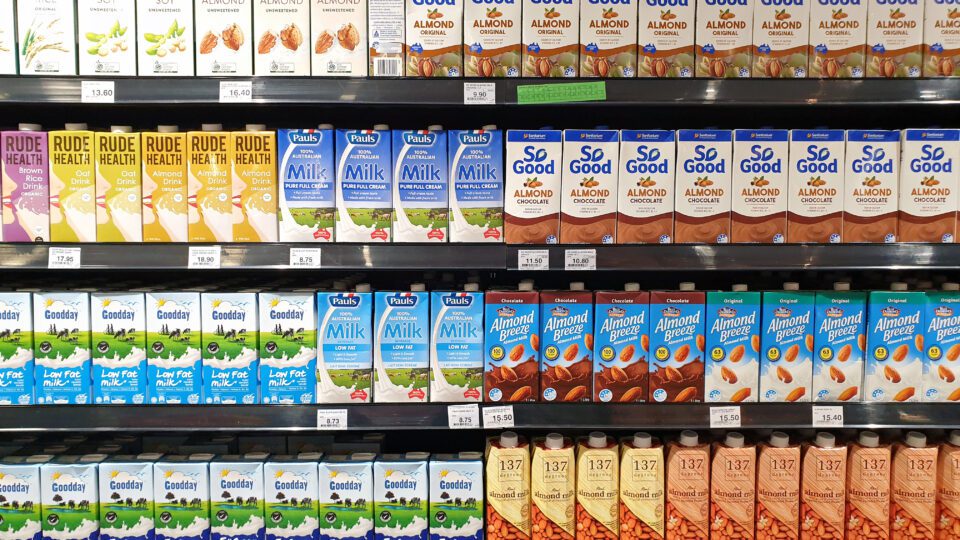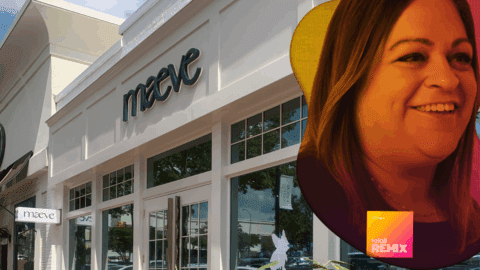The digital surge during COVID-19 accelerated the introduction of direct-to-consumer CPG brands selling online, but three interlocking trends could hobble their continued growth. One is simple competition: more brands and more products competing for consumer wallet and mind share.
The second is inflation, which is causing consumers to adjust their purchasing patterns. In the U.S. specifically, consumers are actively purchasing cheaper brand and product options in numerous categories, including pantry items (33%), packaged snack foods (30%), bread (28%) and dairy products (27%), according to Insider Intelligence.
The third is the post-pandemic shift back toward in-store shopping. This doesn’t present as big a problem for brands that already have established relationships with brick-and-mortar retailers, but virtually all CPG brands are now embracing an omnichannel approach to create a more sustainable, scalable path to growth, especially as VC funding slows. And as they aim to differentiate in this moment of heightened competition, they need to prioritize innovation.
“I hear the word ‘innovation’ tossed around in so many ways, but this is really key in CPG right now,” said Rose Hamilton, CEO of Compass Rose Ventures, a firm that consults CPG brands on their growth strategies. “In this category, innovation is about creating a new methodology for value creation for the customer.” Hamilton will be moderating a detailed discussion on the new meaning of brand value in the VC community during the Retail Innovation Conference & Expo, which will be held June 13-15, 2023 at McCormick Place in Chicago.
Innovation can show up in three core ways:
- Product innovation, encompassing the way products are sourced, designed and packaged;
- Marketing innovation, including brand development and product storytelling to reaffirm the unique value of the product; and
- Experience innovation, or all the ways consumers can use and interact with a brand and its products.
Product Innovation: Finding Inroads for Specialty and Expansion
Nearly two-thirds of consumers are implementing savvier measures to meet their spending needs, such as tapping into savings, increasing credit card balances and paying less than the minimum on due bills, according to McKinsey research. Although consumers’ net intent to spend is 22% positive for essential products like groceries and pet food/supplies, their intent is 3% negative for semi-discretionary items like household supplies, personal care, skincare and cosmetics.
To navigate these rocky waters, CPG brands need to focus on their product innovation story, Hamilton explained. Specifically, they need to outline the unique values and benefits of products, and why spending more makes sense for the customer.
“Value creation is going to come for the brands that are listening super well to the consumer and finding those pockets where people are willing to spend their money,” Hamilton explained. “People are going to spend the $5 or $10 on a cup of coffee if there’s something unique and interesting about it. Those same people are going to spend money on a beauty product if there’s something unique, personalized and interesting about it, too.”
Sustainable and ethical product development practices have become particularly central to CPG product innovation. For example, Do Good Chicken is a food brand that turns surplus grocery food into nutrient-rich feed for its chickens. The end product is natural, U.S.-hatched and raised chickens that “do good and also are good for the planet,” Hamilton explained. “By showing how they reduce waste, Do Good Chicken shows how consumers can participate in sustainability from their own homes and where they buy. You can bet people would be willing to pay a bit more for that value.”
Brands also can use consumer insights to identify possible paths to product expansion — either into new product SKUs or entirely new categories. Listening labs, survey panels and one-to-one meetings with loyal customers can help leaders better understand customer needs and pain points. Then, they can uncover new white space that allows them to establish a more relevant, long-term product roadmap.
House of Wise, which started as a range of CBD drops and gummies to address stress and sleep issues, quickly expanded to include new product lines for fitness and sex drive. The company is extremely active on social media and has a direct brand community to gauge new ways the brand can grow and evolve. Skincare brand Bubble takes a similar approach, tapping its community of Gen Z consumers to inform everything from brand packaging to new product releases.
“Brands have to get permission to expand [into new categories],” Hamilton explained. “If you’re a perfume brand, are you going to have permission to create diapers? Probably not. But there’s enough crossover in wellness and beauty, for instance, because they’re both increasingly science-backed categories. If it’s a science-backed brand or individual product, then you have permission to extend as long as you have the results behind it.”
Marketing Innovation: Creating and Activating a Breakthrough Story
While a great product is the foundation of every great CPG brand, a great story is what reaffirms positioning and establishes the brand’s overall market fit. Once brand founders establish their core story, they should develop a messaging architecture to ensure they’re attracting the right customers with the right value proposition, according to Hamilton.
“A lot of these brands know the secret sauce that they offer, but they don’t convey it well,” Hamilton explained. “Therefore, they’re not attracting the right customer because they’re not speaking their language. There’s a serious positioning and marketing retooling that needs to happen to unlock the founder story that will really help the brand differentiate.”
Hamilton recommended that brand and creative marketing teams run listening labs and one-to-one interviews with customers to help establish their positioning and key differentiators. They will get the qualitative insights they need to refine (or reaffirm) their messaging: “If you don’t have your messaging crystal clear, no one is going to understand what you do or why you do it,” she explained. “No one’s going to want to hang out with the brand and then you’re not going to scale.”
Once a strong brand is established, marketing and creative teams should develop their tactical marketing mixes to include channels that allow them to tell the company’s story effectively.
“There is a general playbook that still works across the board — it’s about finding the channel(s) [that are] the best fits for the brand positioning and the brand messaging,” said Calvin Lammers, Managing Partner at creative digital agency Rare Eye, in an interview with Retail TouchPoints. “If a brand is aiming for authenticity and transparency, TikTok has become the key platform for that organic, transparent messaging. You can’t put a highly designed TV spot on TikTok and expect it to work; it’s not what the channel was built for.”
Brands also need to consider the reach of each platform, especially if brand reach and awareness are goals. “As you scale, you need to find new audiences that you haven’t been able to reach previously,” said Lammers. “That’s where TV campaigns still play a very valuable role in building a brand, which is why brands like The Farmer’s Dog are running Super Bowl ads. Because at the end of the day, the reach is still unmatched.”
But reach is only part of the equation. While the direct-to-consumer CPG landscape has largely focused on performance marketing methods that revolve around firm KPIs and short-term returns, brand building and brand marketing are key to longevity in an omnichannel landscape.
“As you build a CPG business, there has to be a focus on building a brand with a human, emotional connection,” Lammers advised. “This is where you have to do some more traditional marketing tactics, where you won’t see that immediate return or revenue, but you’ll have that mindset of building a brand that supports the full funnel for the company.”
Lammers has worked firsthand on balancing brand and performance marketing in his in-house e-commerce and digital roles for fast-growing brands like TRUFF Hot Sauce and Health-Ade Kombucha. He’ll be speaking on the next era of DTC during the 2023 Retail Innovation Conference & Expo.
While the lack of firm KPIs is enough to make any marketing leader anxious, Lammers noted that CPG and retail businesses alike can benefit from brand tracking and health measurement platforms like Numerator. These solutions allow brand and marketing leaders to gauge how their brands resonate with different consumer demographics and within specific geographic areas. Data can be tied back to marketing activations and campaigns so that teams can better understand the equity impact of their efforts.
Experience Innovation: Showing Up in a Way that Resonates
“Experience” can encompass many things, but in the world of CPG, it revolves around how a consumer interacts with a product.
Some health and personal care brands are differentiating through experiences by completely transforming the way consumers use a product. For example, Bite asks consumers to trade their tubes of toothpaste for chewable bits of toothpaste, which are both more convenient and more sustainable. Brands like Aura Bora and Oats Overnight use their subscription programs to forge a community of engaged and loyal consumers. Members get special savings on products, as well as exclusive access to new products, so they can share their feedback and shape future product releases. These methods completely change the way a consumer interacts with and supports a brand they love.
“This idea of subscription commerce can go a step further to include membership programs, which are a bit more advanced and create a more synchronized experience across channels for a developed community,” Lammers said. “There’s no universal approach that works for every brand, but these programs get people to opt into a community that provides access to specific advantages and allows them to be connected to the brand on a deeper level. As they become more omnichannel brands, these companies also are thinking about ways they can better connect their online loyalty programs to their in-store purchasers.”
Experience also refers to how products are integrated into consumers’ everyday lives, according to Hamilton. This includes everything from events and activations to non-traditional wholesale partnerships. The more interesting and seamless these integrations are, the more memorable they are for consumers.
INBLOOM, the plant-based body nutrition company founded by Kate Hudson, accomplishes this by rethinking the traditional wholesale selling model and instead, forming partnerships with adjacent brands. Bluestone Lane sells a signature line of smoothies crafted with INBLOOM protein. During the 2022 holiday season, the brand worked with Barry’s on a “Holiday Survival Smoothie” that was sold in Barry’s Fuel Bar locations. All shoppers who made a purchase on the INBLOOM ecommerce site also received free access to a Barry’s workout class during the promotional period.
“Rather than going wholesale, which is a margin play, brands should look at their strategic partnerships,” Hamilton advised. “Find a brand that shares values like yours so you can create value. That intersection where smart brands get together creates a really great space to grow.”
It is possible for CPG brands to tap into all three innovation types — product, marketing and experience — to grow. However, Lammers noted that specialization is crucial.
“Brands can pull all the growth levers for innovation,” he concluded. “But CPG brands are always best served if they can really focus on one specific area and do that really well. Then they can dip their toes into other areas along the way.”













